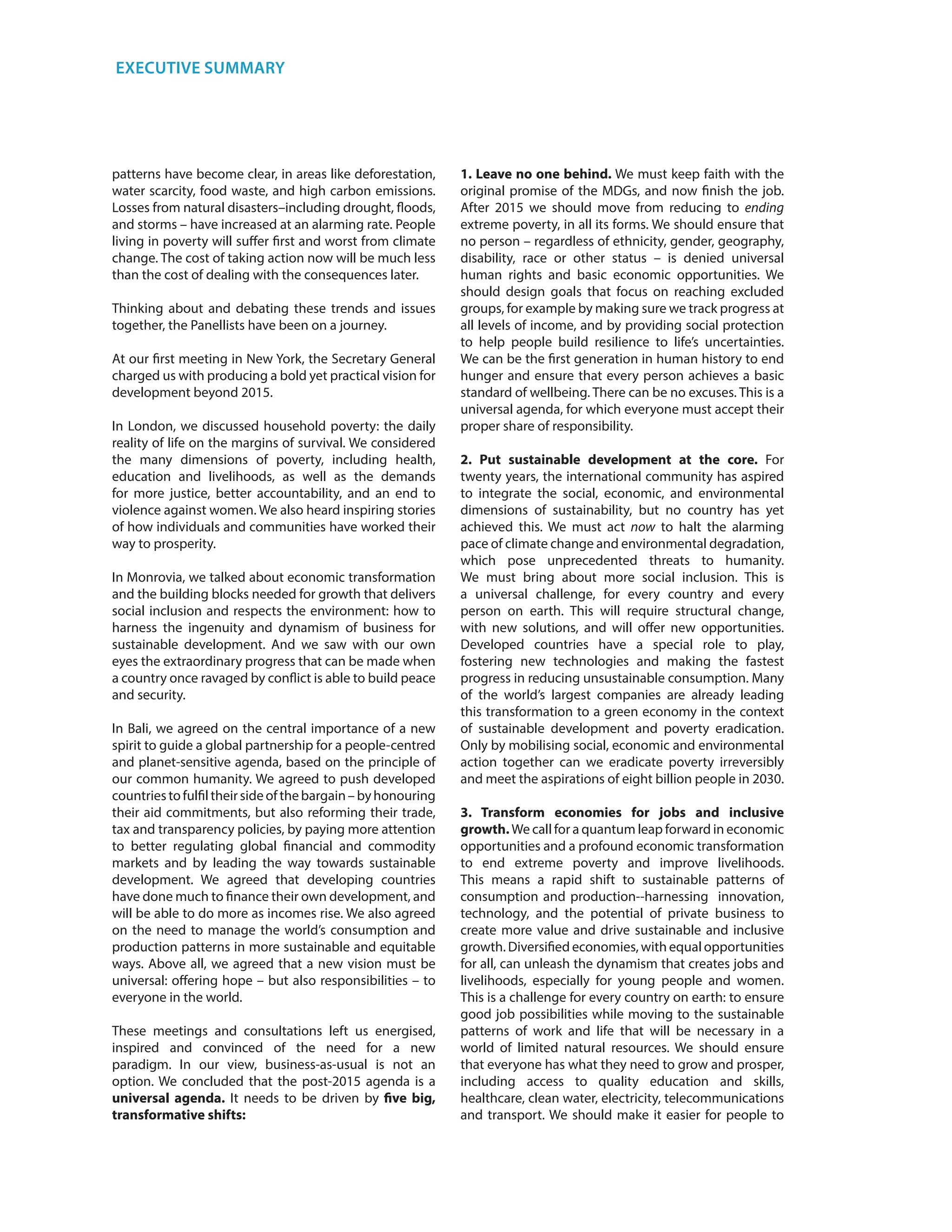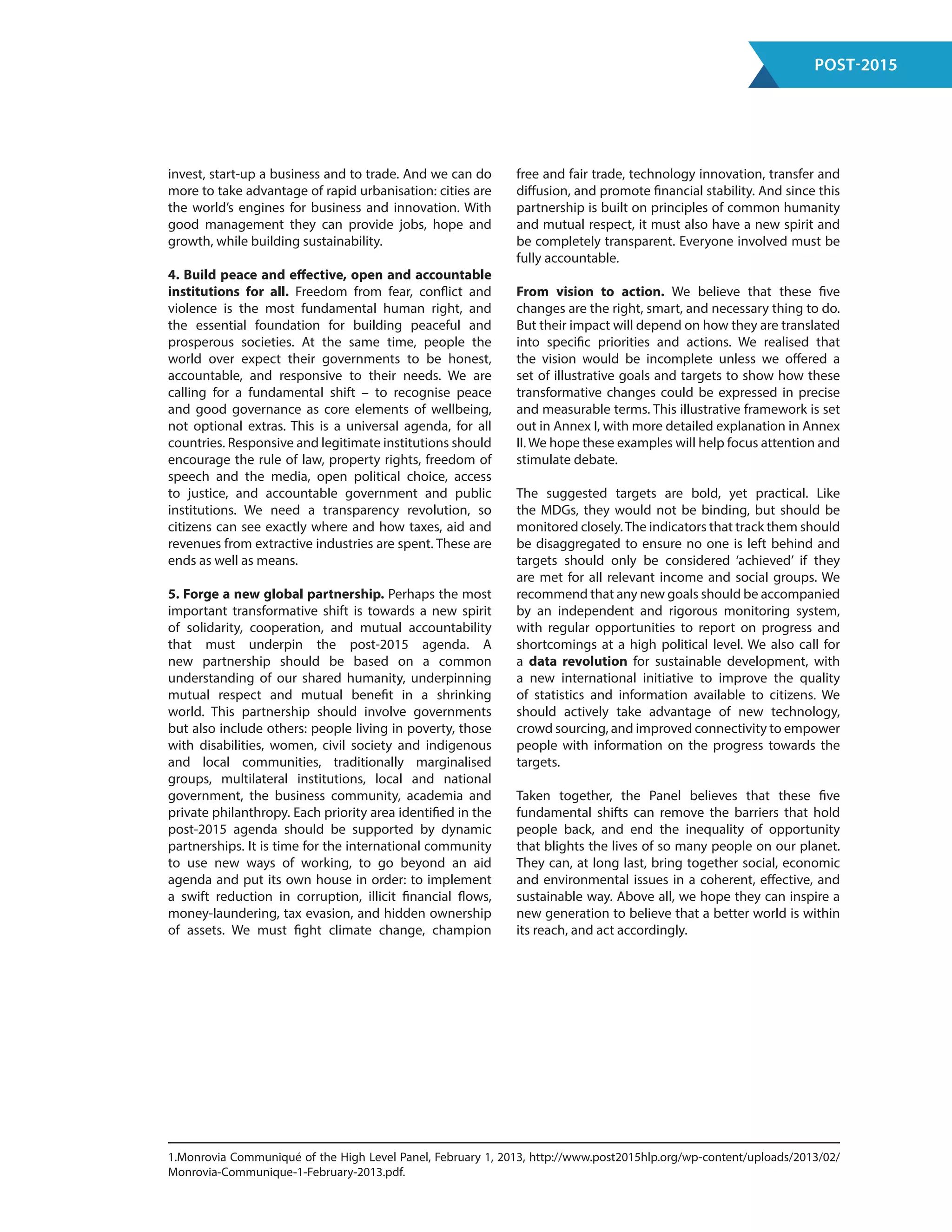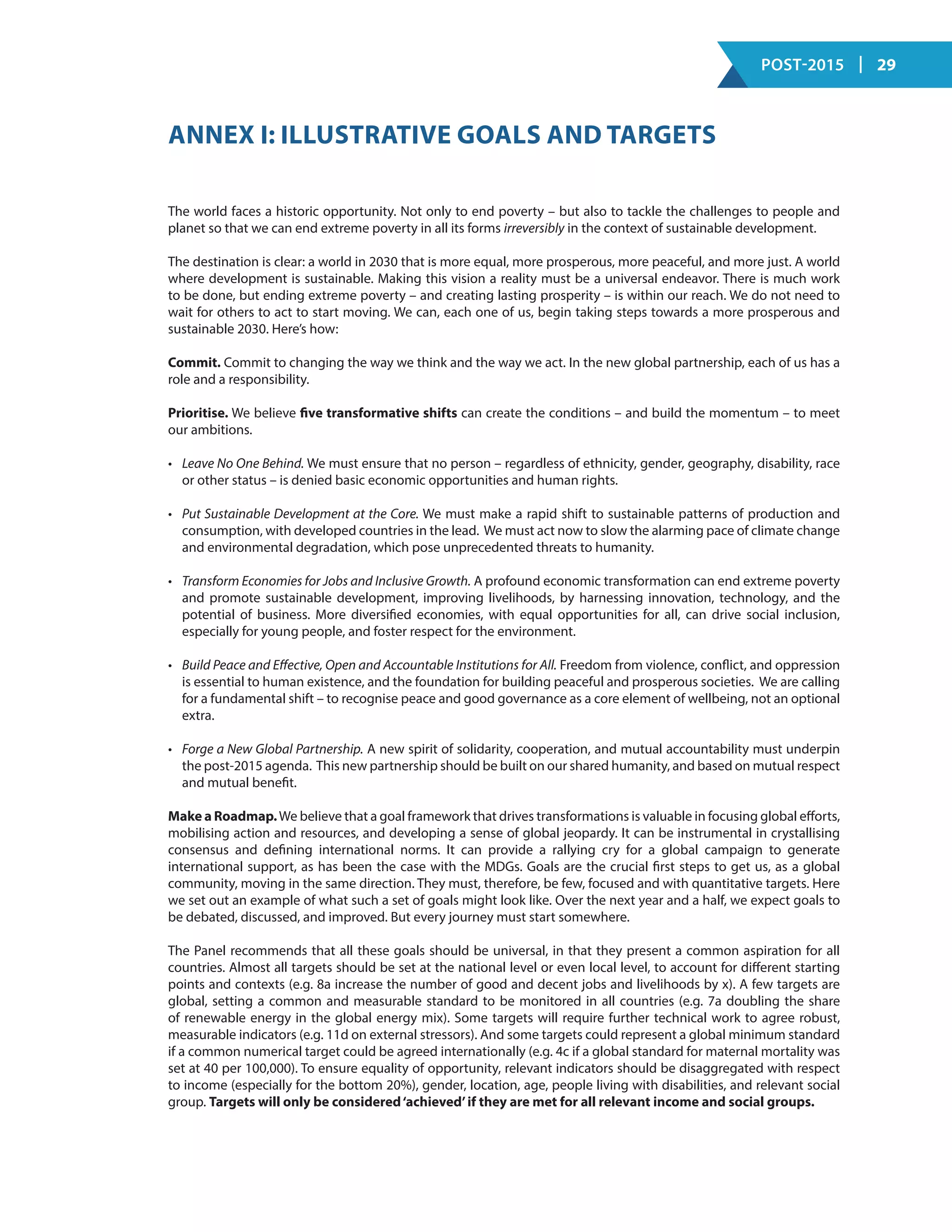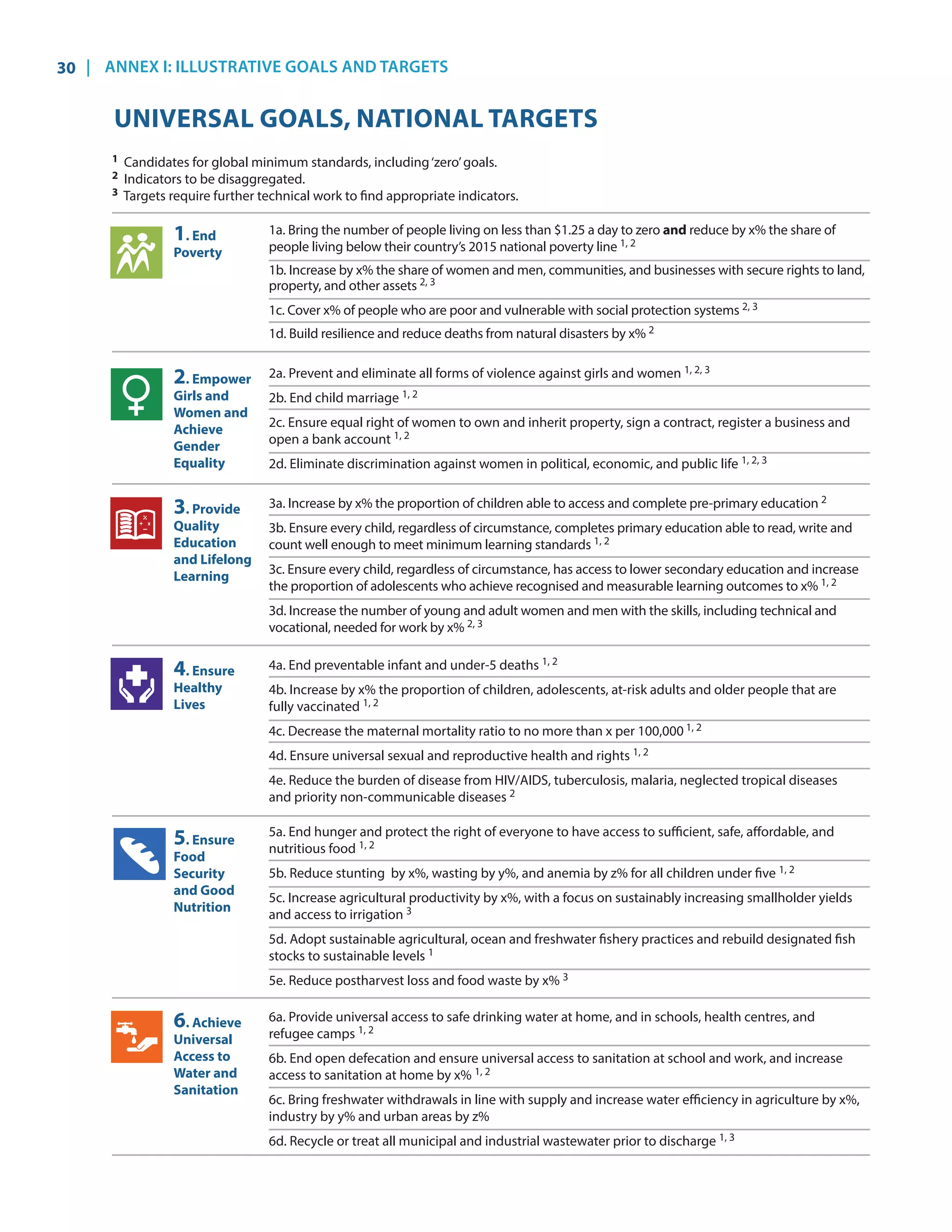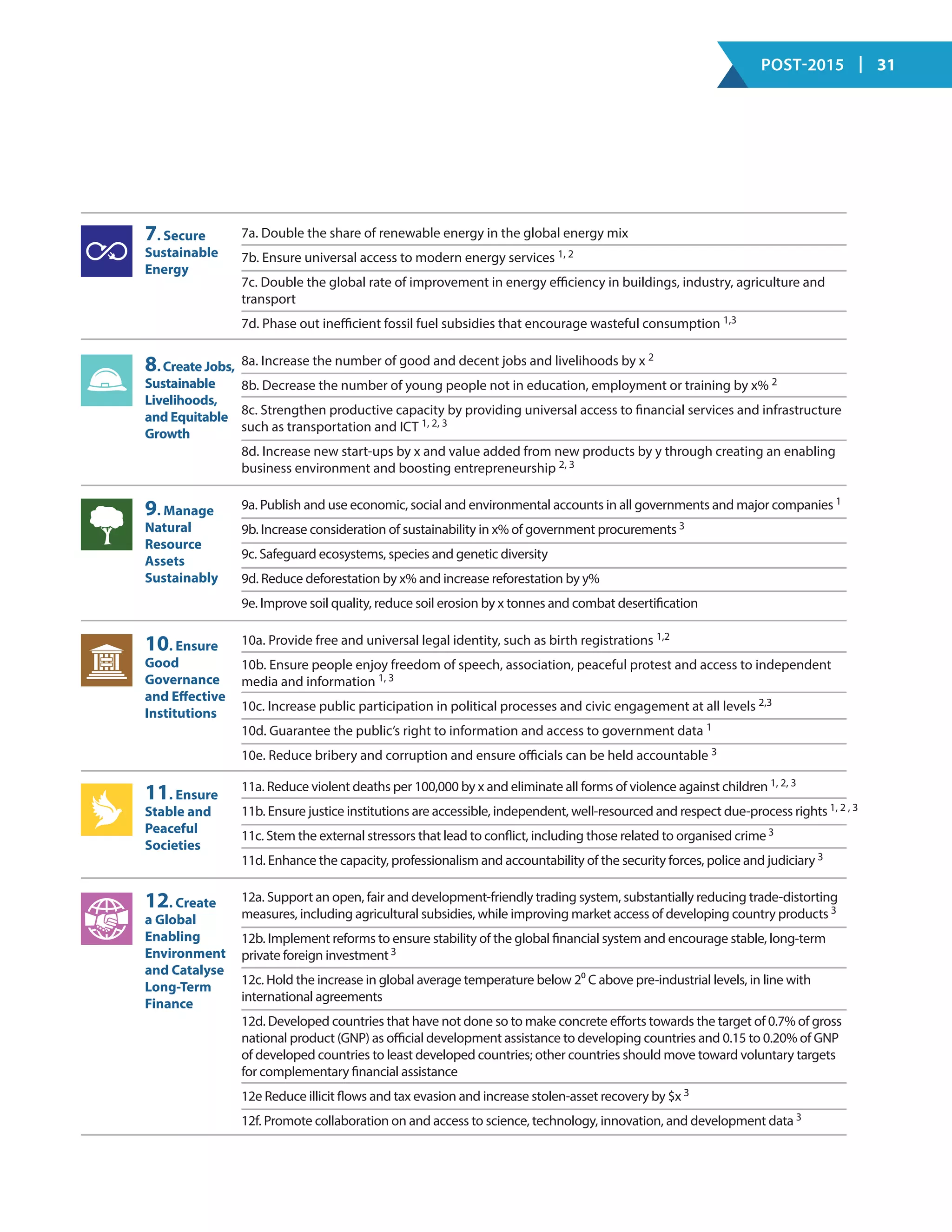The document outlines a vision for ending extreme poverty and promoting sustainable development by 2030, emphasizing the need to build on the successes of the Millennium Development Goals (MDGs) while addressing their shortcomings. It calls for five transformative shifts: ensuring no one is left behind, placing sustainable development at the core, transforming economies for inclusive growth, building peace and effective institutions, and forging a new global partnership. The proposal emphasizes the importance of monitoring progress, fostering inclusivity, and adapting to changing global circumstances in pursuit of a more equitable and prosperous world.

